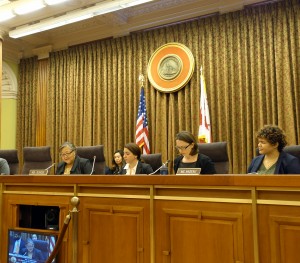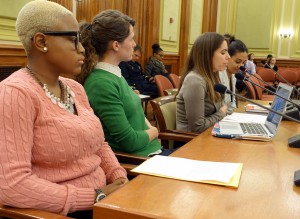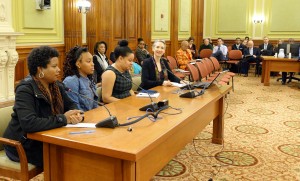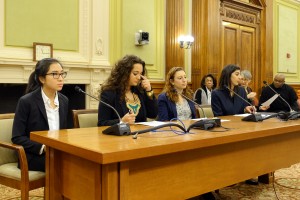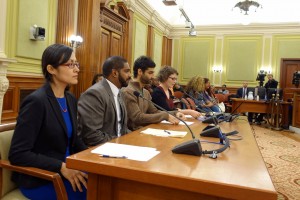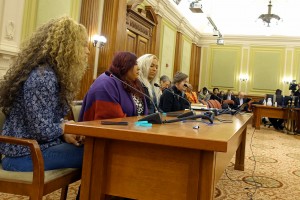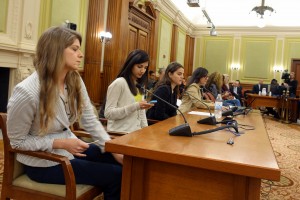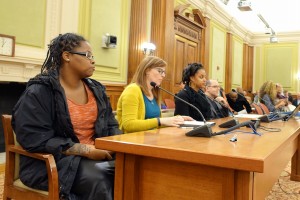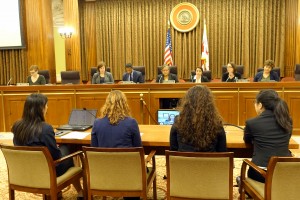 The fourth ever hearing on street harassment was held in Washington, DC, on December 3, 2015. The first was held in 2010 in New York City, the second in Philadelphia in 2013 and the third in Kansas City in 2014.
The fourth ever hearing on street harassment was held in Washington, DC, on December 3, 2015. The first was held in 2010 in New York City, the second in Philadelphia in 2013 and the third in Kansas City in 2014.
The hearing was requested by Ward 1 D.C. Councilmember Brianne K. Nadeau and co-convened by the Committee on the Judiciary and Committee on Housing and Community Development. Our ally organization Collective Action for Safe Spaces was instrumental in helping the hearing happen, organizing witnesses, and crafting talking points and assisting people with their testimonies.
This is from Councilmember Nadeau’s website:
“Unfortunately, many residents in the District have experienced some form of street harassment, which can include vulgar remarks, heckling, insults, innuendo, stalking, leering, fondling, indecent exposure, and other forms of public humiliation, often focused on the individual’s perceived gender, gender identity, race or ethnicity, or disability. Street harassment impairs the ability of District residents to move freely and safely and contributes to a broader culture of violence. The roundtable will provide an opportunity for stakeholders to identify additional steps that could be taken to better understand and address the issue.”
The hearing lasted for four hours and 15 minutes. During the public portion, there were people representing various organizations, including CASS, SSH, Defend Yourself, Muslim American Women’s Policy Forum, Casa Ruby DC, and the Washington Area Bicyclist Association. There were individuals who shared heartbreaking and moving stories, including a mother and her teenage daughter, three transwomen of color, women of all races, and four male allies, including three men of color. CASS did a commendable job ensuring that a range of voices and viewpoints were represented in the panel.
Government officials also testified at the end, including the chief of police for the transit system and a representative from the mayor’s office in the department of human rights.
I was proud to join SSH board member Layla in testifying. You can read or watch her testimony here and read my full testimony here.
It was exciting to have SSH’s national study cited numerous times by the council members and people testifying. Many of us who testified advocated for the city council to collect DC-specific data so we can better understand the problem and work on non-criminal, community solutions. There was a special focus on asking for help working with bars — common sites of harassment — for CASS and Defend Yourself’s Safe Bars program.
Many people live tweeted throughout the event using #RaiseTheBar. A Storify will be available soon.
Photos:
(Click on the photo to see a larger version.)
Testimonies:
You can watch the entire hearing via the DC Council’s website. Closed Caption is available. I also recorded videos of several people who testified and those are available in this playlist on the SSH YouTube Channel. These are two of my favorite testimonies.
An amazing mother-daughter duo talk about how this issue unique affects teenage girls.
A passionate plea from a survivor of sexual abuse.
Media Coverage:
NPR interviewed councilmember Nadeau and CASS’s interim director Jessica Raven for a morning segment before the hearing (I was thrilled to hear on my drive to the hearing!).
In the evening, there were segments on NBC4, Fox5, and WUSA9.
The Washington Post, Washington Blade, The DCist and the Washington City Paper covered it too.
